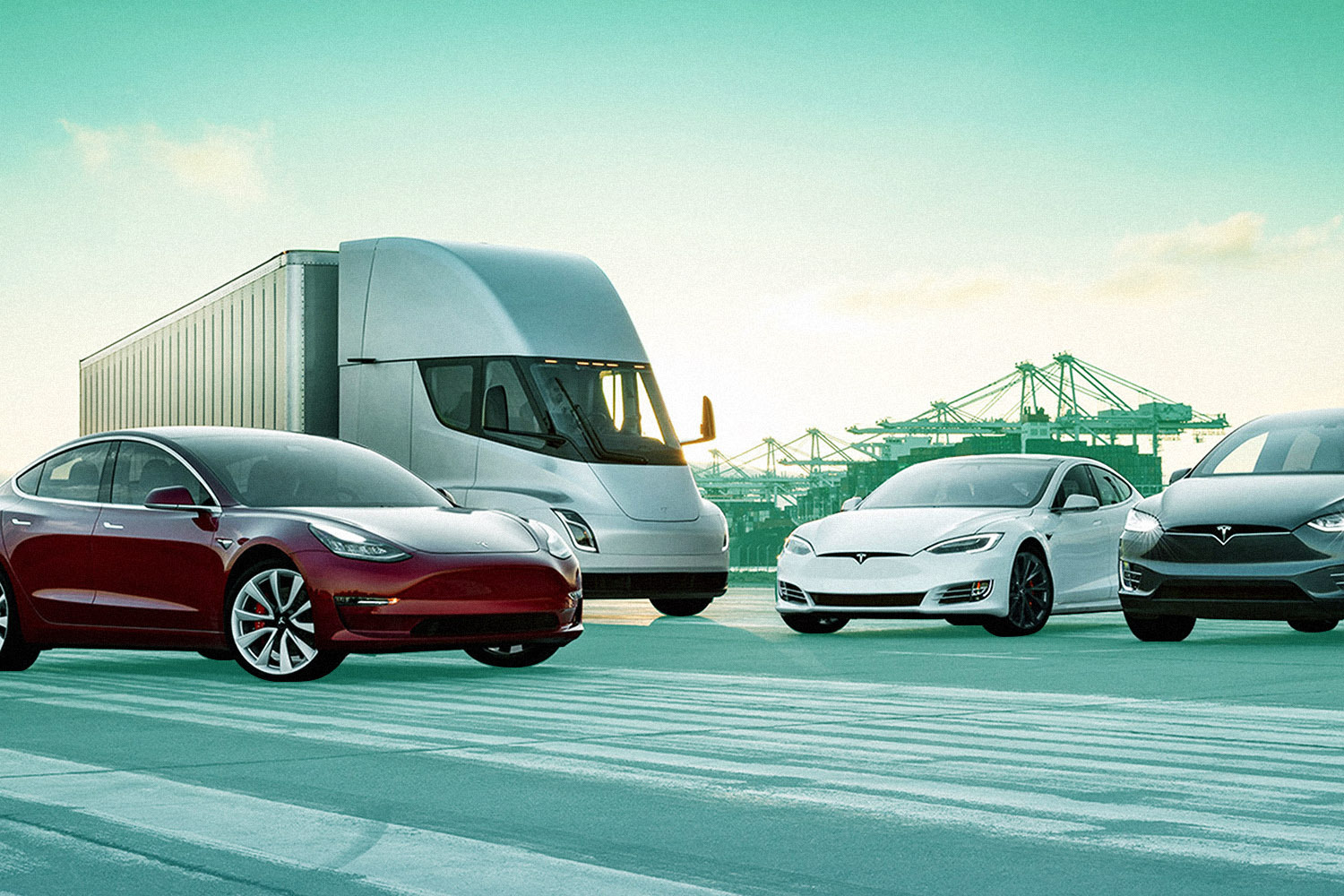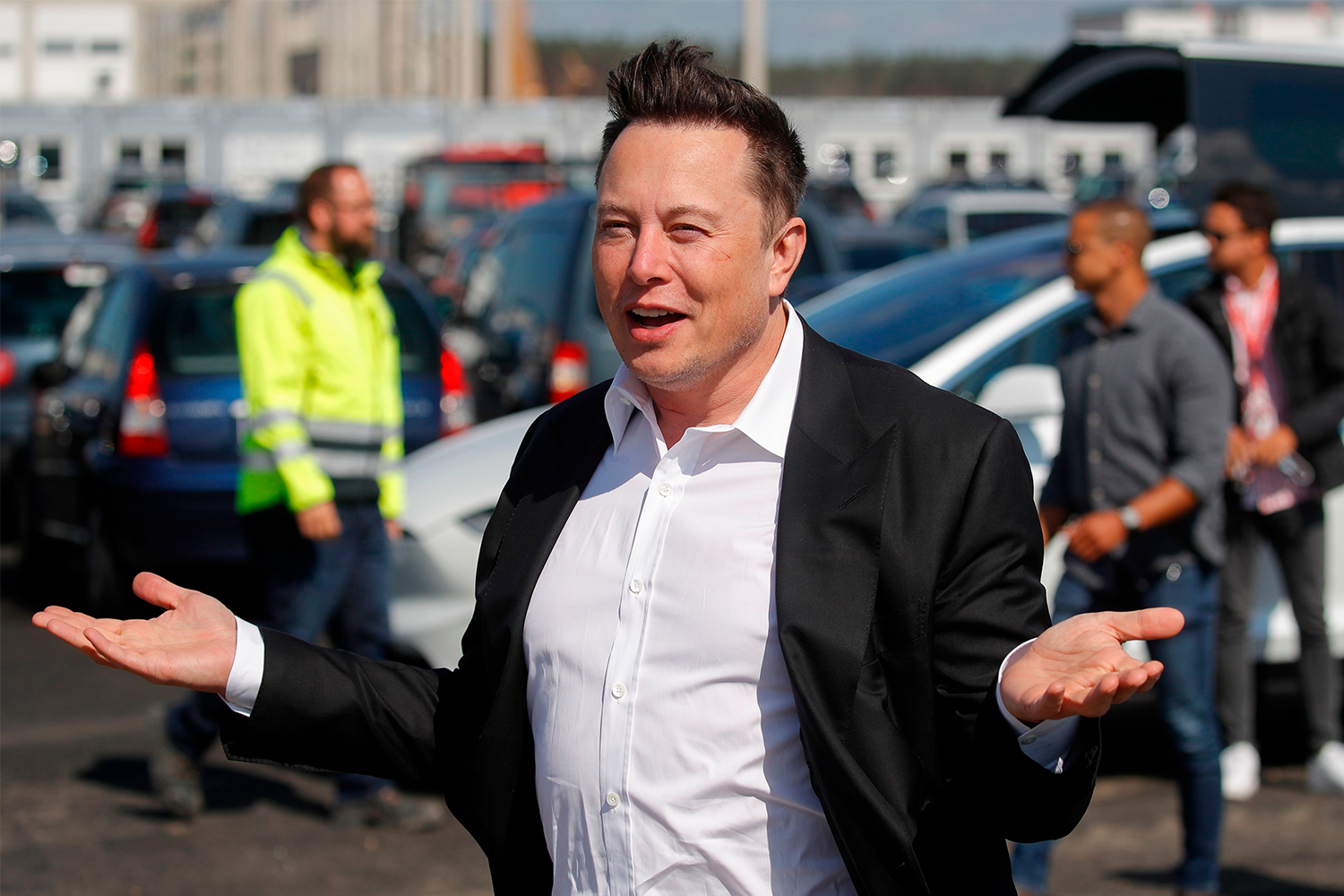If you read anything about Tesla’s Battery Day event, which was held Tuesday afternoon outside the company’s factory in Fremont, California, it will probably be one of three bold claims from Elon Musk: that they will build a $25,000, fully autonomous electric car in three years; that a higher-powered version of the Model S called “Plaid” that can do 0 to 60 mph in under two seconds is now available to order for $139,990; and that the plan is to eventually scale up production to 20 million cars a year (in 2019 they delivered just 367,500).
All of that, as they say, was window dressing. Shiny stuff to keep the in-person investors and online fanboys happy as the big reveal analysts expected — a million-mile EV battery — did not quite materialize. But Musk delivered something much more consequential.
When he first came onstage during a shareholder meeting, which came before the Battery Day presentation in a three-hour livestream, Musk said the event felt like a drive-in movie theater, and it certainly looked that way; because of the pandemic, investors who attended were sitting in Model 3s in front of an outdoor stage. But watching it at home, I got the feeling I was watching a political stump speech, even a sort of State of the Union — Musk was frequently forced to pause as shareholders honked the horns of their electric cars in lieu of standing ovations.
The main message Musk wanted to deliver to the people (at the time of writing, the Battery Day video has almost two million views), even though it seems to have gone over the heads of everyone else? We need to deal with the climate crisis — and his plan on how to do it feels, surprisingly, a lot like the Green New Deal.
When the actual Battery Day event began, the first image Tesla displayed was the West Coast choked by smoke and lit by the encroaching wildfires, a dystopian video shot in September overlaid with the text, “This is real.” After some introductions, the first thing he said was not about a potential million-mile battery or a new revolutionary car, but about climate change.
“Obviously the issues we’re facing are very serious with climate change, and we’re experiencing these issues on a day-to-day basis,” Musk said. “It’s incredibly important that we accelerate the advent of sustainable energy. Time really matters. This presentation is about accelerating the time to sustainable energy.”
That sounds more like the Sunrise Movement, the youth-led group pushing for a Green New Deal, than someone solely focused on delivering value for investors.
To be clear, the Green New Deal, in the simplest of terms, is the idea that we should tackle the issue of both climate change and growing income inequality in one fell swoop by creating good-paying jobs that transition us to a system of renewable energy. You can criticize the details, of course, but on the whole that is a worthwhile mission in theory, and one Musk actually seems intent on seeing through at Tesla by way of electric vehicles and sustainable electric power.
The CEO and Drew Baglino, senior vice president of powertrain and energy engineering, did not explicitly lay out the “good-paying jobs” portion of that promise during the presentation, but they did scatter it implicitly throughout.
The biggest portion of their plan dealt with how Tesla will make its batteries, the most expensive part of electric vehicles, cheaper and more efficient. Instead of relying on Japanese company Panasonic for battery cells, Tesla detailed a vertical integration plan that would bring more battery manufacturing to the U.S. And instead of relying on mining from other countries to get the raw materials needed for those cells, Musk and Baglino also announced that Tesla will do its own lithium mining stateside with a new process that is more environmentally friendly. As for cobalt, which is associated with human rights abuses like child labor in the mines of the Democratic Republic of Congo, for which Tesla was taken to task by some shareholders, the company said it’s hoping to phase out the material.
Those, of course, are gigantic claims, and commenters have been quick to point out that Tesla doesn’t always follow through on its predictions (as The Verge noted, Musk promised that $25K car back in 2018, and after the shareholder meeting Tesla added a disclaimer that the Battery Day presentation would feature “forward-looking statements,” not iron-clad promises). But as the auto industry falters because of the pandemic, with global sales projected to drop 17 percent this year, Tesla is expected to increase sales about 36% compared to 2019 despite COVID, according to the LA Times. Plus, as American manufacturing as a whole continues to dip, Tesla is reigniting interest in Stateside production and inspiring a slew of copycats.
This isn’t the story of a company picking itself up by its own bootstraps, though. The reason Musk’s plan sounds so much like a Green New Deal is because the company relies on government incentives. On the consumer level, there are the federal and state incentives available to Americans who buy electric vehicles and Tesla’s solar products. For Tesla itself, the company saw cities and states offering massive tax breaks to build its Cybertruck factory, and Austin, Texas eventually shelled out for the honor. If Tesla does expand its operations with mining, processing and battery production, it stands to reason that similar bait will be thrown out.
All that to say, you can’t be a champion of Tesla and its American innovation without also acknowledging the government aid that is keeping it viable, and we can’t expect to innovate our way out of the climate crisis without that sort of government intervention (as a country we’ve been fine subsidizing the fossil-fuel industry, so this really shouldn’t be a divisive issue).
“We saw the Battery Day deck as a call to arms to governments, suppliers, investors and engineering talent to ‘take it up a notch’ and significantly accelerate policies and investment in Tesla’s hegemony of battery manufacturing,” said Morgan Stanley analysts, as Reuters reported.
“Elon can’t do it alone … Tesla needs help to get there,” they added.
I’ve been critical of Elon Musk in the past, and politicians who champion the Green New Deal like Senator Bernie Sanders and Representative Alexandria Ocasio-Cortez have obviously dealt with more than their fair share of criticism, but when their ideas — and the interests of the American people — meet, with support from financial powerhouses like Morgan Stanley, tackling the climate crisis in the U.S. doesn’t seem so far out of reach.
This article was featured in the InsideHook newsletter. Sign up now.





















